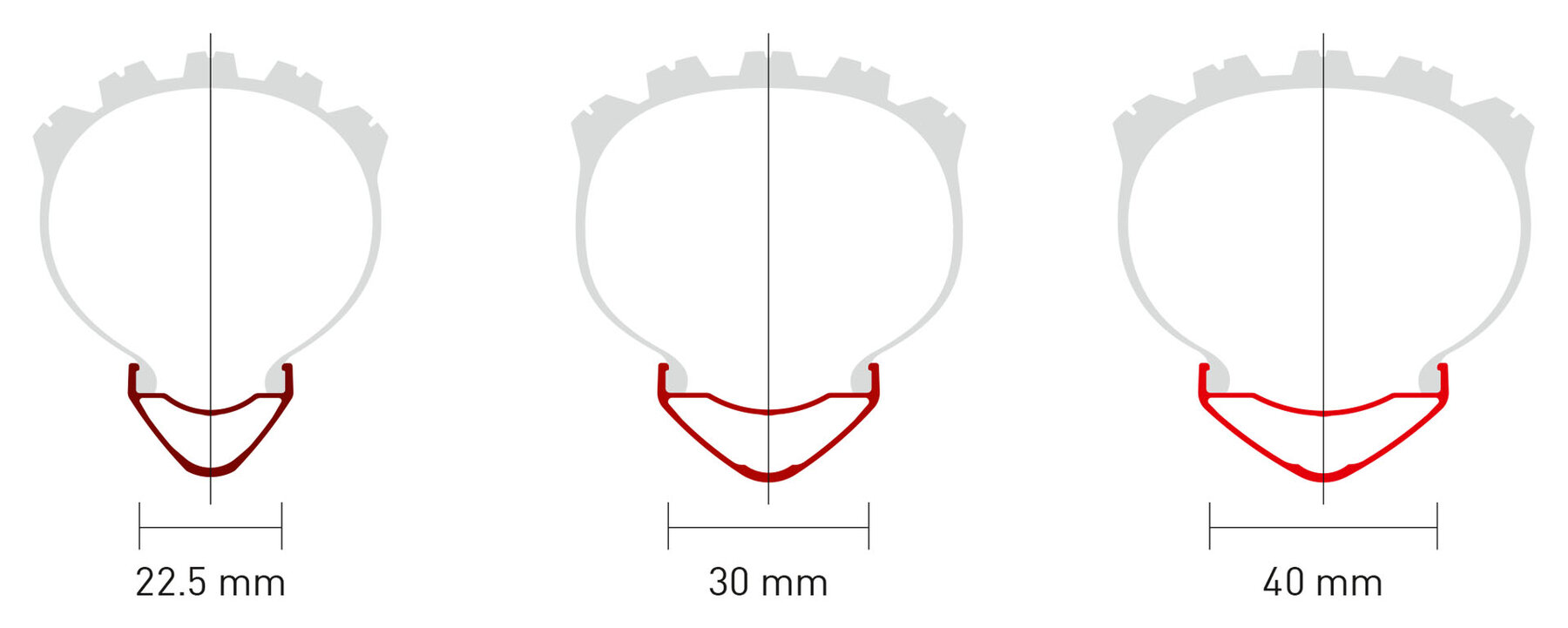With the development of wider rims, wider tires were also developed. However, different tire and rim widths cannot be arbitrarily combined. Simply put, the wider a rim the wider tires can be mounted. An overview of the possible combinations can be found here.
If the same tire model is used on rims of different widths, the effective cross-section of the tire is altered, as is the tire support. Therefore the right combination is crucial for ideal driving performance.


